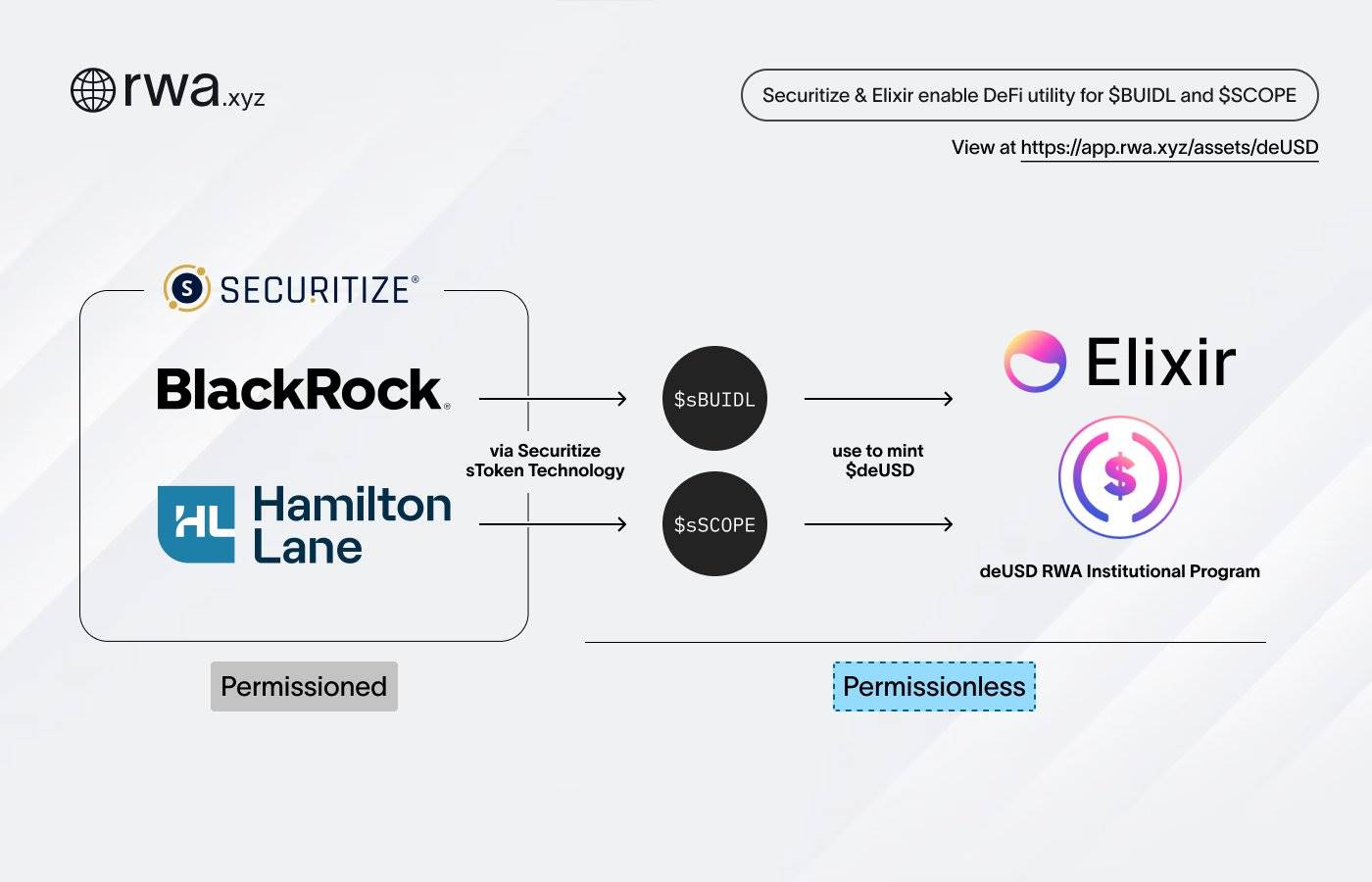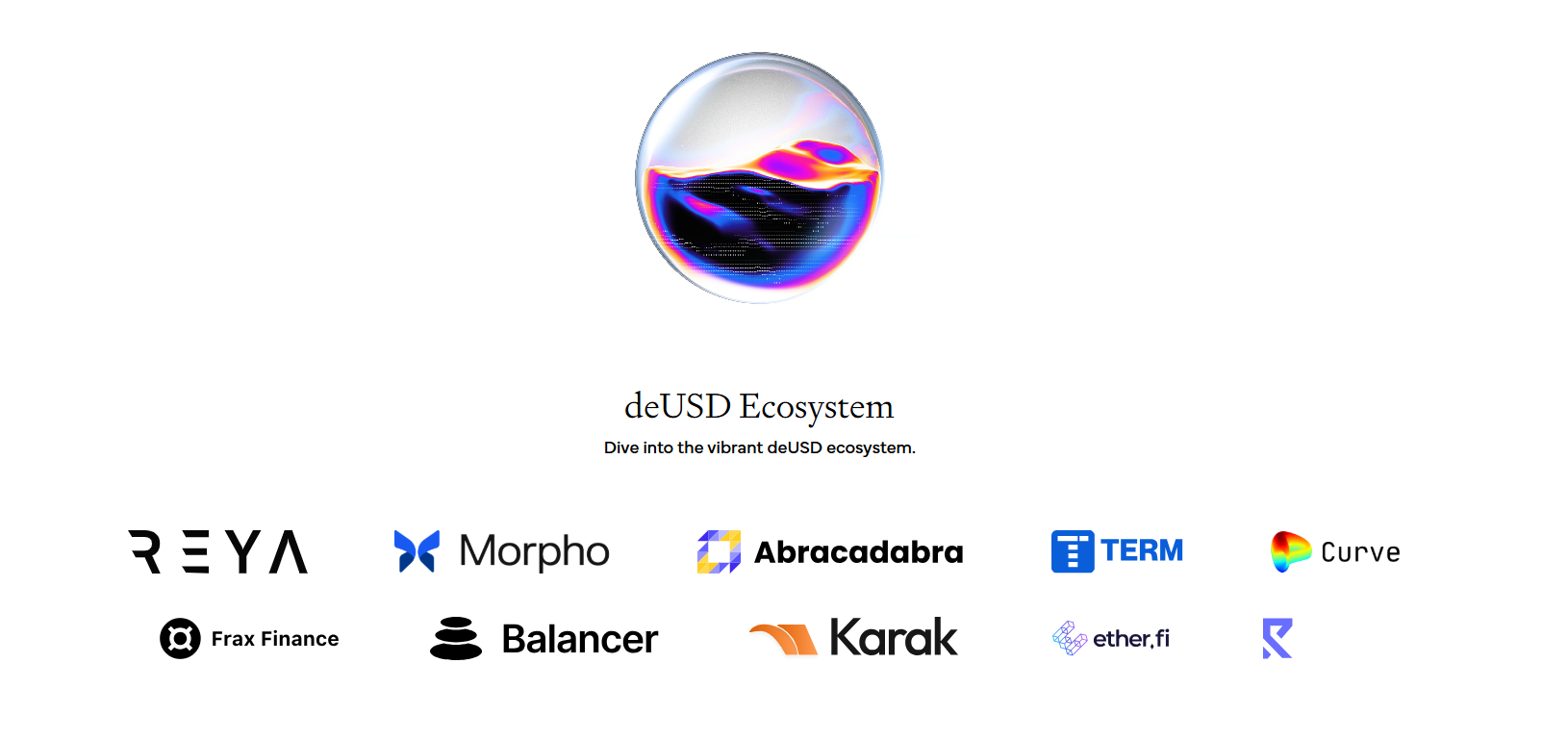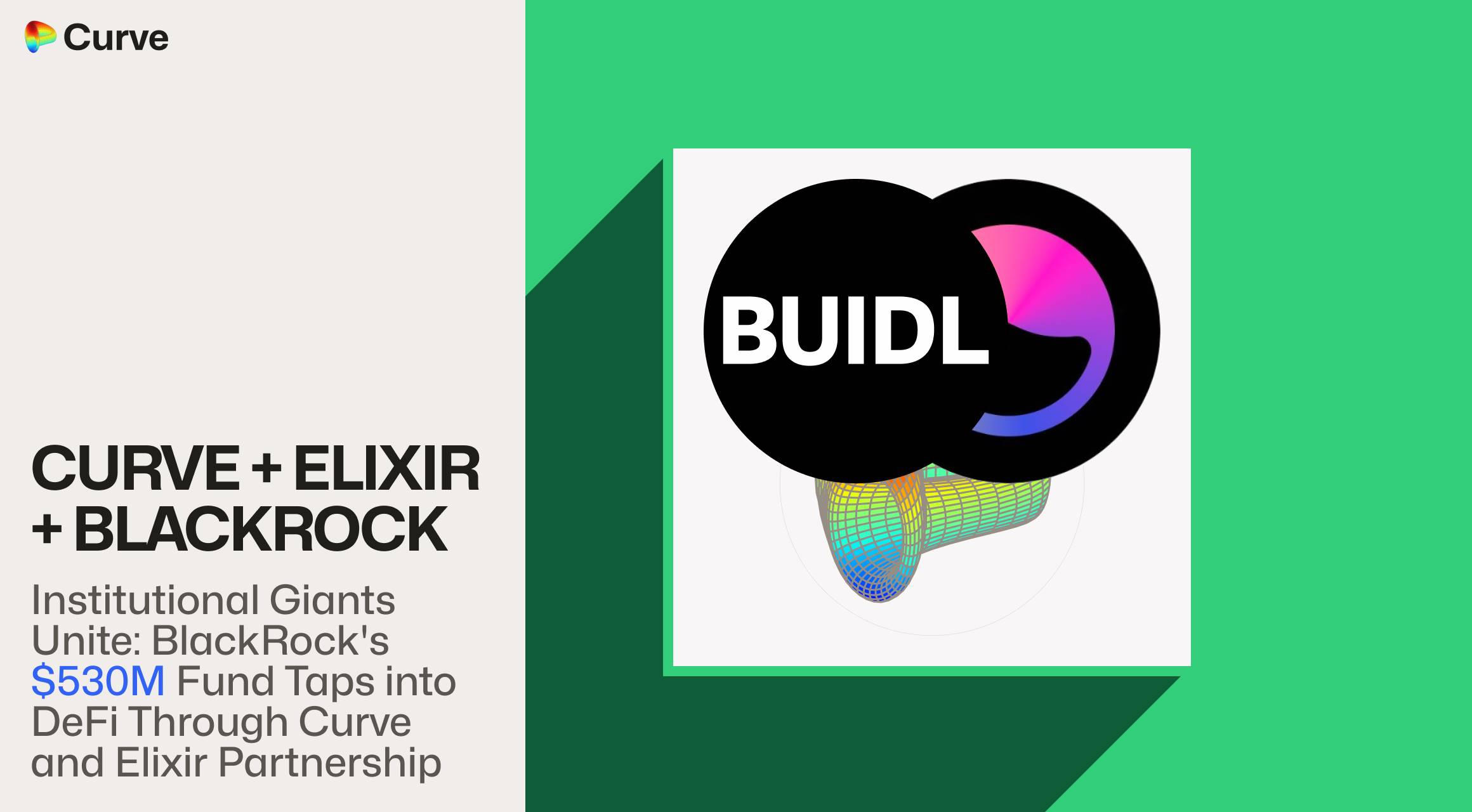With more traditional financial giants like BlackRock entering the scene, the demand and development of institutional-level DeFi will enter the fast lane.
Introduction
In 2025, the Crypto industry continues to move towards a future that the market collectively anticipates. Looking back at the past from a hopeful present, one cannot help but marvel that 2024 was a year of profound transformation for Crypto. This is not only reflected in the institutional breakthrough brought about by the approval of Bitcoin spot ETFs, leading to a "crypto bull market," but also in the fundamental shift in traditional financial institutions' attitudes towards crypto technology, which is directly reflected in market sentiment and prices. Additionally, the successful election of crypto-friendly Trump at the end of the year provided a strong boost to the market.
In this wave of transformation, the most eye-catching development is the movement of BlackRock, the world's largest asset management company, in the crypto space. Its main investment, the on-chain money market fund BlackRock USD Institutional Digital Liquidity Fund (referred to as the BUIDL Fund), has surpassed $530 million in scale, while its business footprint has expanded to multiple networks such as Aptos and Arbitrum. The integration of DeFi and RWA is gradually becoming an undeniable trend.
Recently, BlackRock has continued to explore new practices based on this trend: the BUIDL Fund has reached a tripartite cooperation with digital securities platform Securitize and DeFi infrastructure layer Elixir to launch the deUSD RWA Institutional Program, building a bridge to the DeFi ecosystem for over $1 billion in institutional-level RWA assets.
As the connector between BlackRock and the DeFi world, Elixir is not merely an "asset tokenization platform," but a complete infrastructure layer. Its core product, deUSD, aims not only to solve the on-chain liquidity issues of institutional-level assets but also to explore a new path for the symbiotic innovation of TradFi and DeFi while ensuring asset security. Perhaps this attempt will carve out a new feasible path for DeFi.
This article will delve into BlackRock's new movements and the key role that Elixir, as an infrastructure layer, plays in this connection, exploring the new direction of DeFi under the current market trends and showcasing the innovative path for traditional financial institutional assets to enter the DeFi arena.

Institutional Involvement in DeFi: How Does the deUSD RWA Work?
Of course, BlackRock is not the only asset management giant entering the deUSD RWA institutional program; the entire framework also supports other assets such as Hamilton Lane's SCOPE Fund. Major institutions have already actively extended an olive branch, so how to fully realize on-chain liquidity while ensuring asset security is the top priority of this cooperation. Elixir and Securitize cleverly address these cooperation focuses through innovative technical architecture.
Dual-Track Parallel: The Perfect Combination of Yield and Liquidity
Through the unique dual-layer architecture design of the deUSD RWA institutional program, it cleverly connects the permissioned environment of traditional finance with the permissionless ecosystem of DeFi.
Permissioned Environment: The Starting Point for Asset Tokenization
In the first layer, the BUIDL and SCOPE funds undergo initial tokenization through Securitize's "sToken" technology. This process is based on the ERC-4626 standard, transforming traditional financial assets into $sBUIDL and $sSCOPE tokens. Securitize's permissioned environment ensures that the entire tokenization process complies with regulatory requirements, providing necessary compliance guarantees for institutional participants.
Permissionless Environment: The Extension of DeFi Innovation
The tokenized assets enter Elixir's permissionless environment, which is the second layer of the entire solution. Here, holders of $sBUIDL and $sSCOPE can simultaneously:
Use their tokens to mint deUSD, gaining liquidity in the DeFi ecosystem
Continue to enjoy stable returns from the underlying assets (such as U.S. short-term treasury bonds)
Participate in a broader range of DeFi applications without affecting their original yield rights
The brilliance of this dual-layer architecture lies in achieving complete risk isolation:
Clearly, Elixir has incorporated risk isolation into the core considerations when designing deUSD RWA. The standardized interface of the ERC-4626 vault provides a unified standard paradigm for asset valuation and risk monitoring. Through a precise mechanism for decoupling yield rights and liquidity, the operations of the original assets (such as the treasury bond yields of BUIDL) are completely separated from the DeFi interaction layer. Smart contracts ensure the independence of yield rights, meaning that fluctuations on the DeFi side will not affect the security of the underlying assets.
Separation of yield rights and liquidity: The original yield flow remains unchanged at the Securitize level
Separation of environments: The permissioned environment ensures compliance, while the permissionless environment provides space for DeFi
Separation of risks: Even if there are fluctuations on the DeFi side, the security of the underlying RWA assets will not be affected

How Elixir, Favored by BlackRock, Supports the Entire Chain?
Elixir's favor from traditional financial giants like BlackRock is not coincidental.
In its deep cooperation with BlackRock and Securitize, Elixir has demonstrated mature institutional-level service capabilities. The project team consists of seasoned professionals from top investment banks like Goldman Sachs and Morgan Stanley, who are well-versed in the business needs and compliance demands of traditional financial institutions.
With a solid foundation in DeFi infrastructure, Elixir successfully provides institutions with complete asset management lifecycle support. From being a "DeFi liquidity aggregator" to a "one-stop RWA liquidity solution provider," this bridge connecting TradFi and DeFi is quite robust.
Building Institutional-Level Infrastructure
For institutional users entering DeFi, it is not only necessary to meet the strict requirements of traditional financial institutions regarding security and compliance but also to ensure that the system has sufficient scalability and interoperability. Based on a deep understanding of institutional needs, Elixir has built a complete solution.
Three-Layer Security Architecture of deUSD
The first layer is the asset isolation layer, which achieves complete isolation of institutional assets through smart contracts. Each institution's asset pool has independent risk control parameters and liquidation trigger mechanisms, ensuring that risk events from a single institution do not affect the stability of the entire system.
The second layer is the cross-chain liquidity and pricing layer, where deUSD implements a unified issuance and redemption mechanism across chains. Regardless of which chain the underlying assets are on, it can maintain unified pricing and liquidity management.
The third layer is the cross-chain liquidity optimization layer, which uses a smart market maker (SMM) algorithm to automatically adjust the liquidity distribution of deUSD across different chains, ensuring minimal slippage during cross-chain transfers. This innovation has enabled deUSD to achieve over $800 million in stable trading volume in the past three months.

Cross-Chain Interoperability Architecture
At the same time, to support broader institutional access in the future, Elixir, as an expert, utilizes its resource accumulation in cross-chain technology. It has already launched on mainstream networks such as ETH mainnet, Arbitrum, Avalanche, and Sei, and may integrate ecosystems like Movement, Optimism, and Polygon in the future, achieving liquidity interoperability through a unified cross-chain bridge interface. This ensures that institutions have both cross-chain options and efficient fund interoperability.
Through deeply optimized technical implementations, Elixir has successfully established a secure, reliable, and efficient institutional-level RWA infrastructure. However, the innovative value of the technical architecture ultimately needs to be reflected through application scenarios. After a detailed analysis of the core asset deUSD in this cooperation, it is not difficult to see that the design philosophy of this system aligns with the current situation faced by institutional users in the DeFi space. From asset management to ecological collaboration, from single-chain deployment to cross-chain integration, deUSD is interpreting what "institutional-level" DeFi infrastructure is with its unique technical advantages.
Noteworthy Synthetic Asset deUSD
If Elixir's technical architecture is the skeleton of the entire project system, then deUSD is the heart pumping blood into the overall system. As the core asset of the entire system, the specific design of deUSD is inherently "stable."
deUSD is a fully collateralized, yield-bearing synthetic dollar supported by Elixir Network. Its core innovation lies in establishing a delta-neutral position through stETH collateral and ETH perpetual contract shorts, while also generating yield through MakerDAO's USDS treasury bond protocol.
Compared to traditional synthetic assets, deUSD has three significant advantages:
- Fully Decentralized
The powerful validator network is the core of the Elixir protocol. The Elixir validator network consists of over 13,000 independent nodes distributed globally, with each node participating in transaction validation and consensus mechanisms. The decentralized validator network has no single point of control, ensuring that the protocol is immune to any form of centralized interference, thus safeguarding the protocol's transparency and security.
- Innovative Risk Management
Anyone can mint deUSD by collateralizing stETH. Each stETH collateralized will be used to short an equivalent amount of ETH in the market, while the short position can also capture the market's positive funding rate, bringing additional yield to deUSD.
When the funding rate is negative, deUSD will dynamically adjust its asset composition ratio based on the balance of the OCF (Over-Collateralized Fund, used to support the value of deUSD) to maintain price stability.
- Ecosystem Integration
deUSD, combined with Elixir's high-quality resource integration, abstracts products and exchanges from different public chains into a single yield-bearing asset, reducing the complexity of operations across various blockchains and exchanges for deUSD holders. This allows for easier asset management and transforms more institutions and individuals into potential liquidity providers. deUSD acts like a universal ticket within the Elixir cooperative ecosystem, enabling participation in staking interactions across multiple platforms and even multiple chains, thus fulfilling multi-chain demands through Elixir.

Unlike many stablecoins, deUSD, as a synthetic dollar, does not maintain stability through a 1:1 dollar reserve or centralized issuance. Instead, it achieves price stability through innovative financial engineering and decentralized mechanisms. This design not only provides higher capital efficiency but also makes the integration of TradFi and DeFi more "Crypto Native."
DeFi Cooperation to Support Liquidity
BlackRock's recent "old money entering the market" move has significantly showcased the practicality of deUSD—achieving both security and yield, bringing the dual enjoyment experience favored by on-chain players to financial connoisseurs eager to try new things.
In the already proficient DeFi ecosystem, deUSD has even more room to maneuver.
Through deep integration with mainstream DeFi protocols, deUSD has created a comprehensive liquidity supply system for institutional users. With the support of the liquidity optimization layer, institutions can participate in more complex DeFi strategies while ensuring asset security, achieving better yield performance.
Take Curve, the liquidity center for deUSD, as an example:
Curve can deeply accommodate a large amount of institutional-level liquidity coming from RWA assets—users can deploy deUSD/USDC, deUSD/USDT, deUSD/DAI, and deUSD/FRAX in the Curve deUSD Pool. LP users can earn trading fee rewards while also enjoying additional stacked rewards from Curve & Elixir Apothecary: Elixir offers up to 5 times the Elixir Potions yield for liquidity providers on Curve, and staking LP tokens can earn 10 times the points. This provides extra benefits for liquidity in the RWA direction, maximizing the layered yields of DeFi.

Elixir vs Ethena: Two Paths for Institutional-Level DeFi
Coincidentally, as the sector heats up, Ethena has also partnered with Securitize to launch the stablecoin USDtb, which is similarly supported by BlackRock's BUIDL Fund. While both are institutional-level DeFi solutions, will Elixir's approach "collide" with Ethena's?
It is found that although both Elixir and Ethena are focused on the direction of TradFi + DeFi, they start from two different paths, and there are still some differences:
Different Track Choices
Ethena: Focus on the Stablecoin Track
Ethena has chosen a relatively focused development path. The project uses BlackRock's BUIDL as its core supporting asset to launch the stablecoin product USDtb. This model has the following characteristics:
Supported by a single asset
Relatively simple operational model, controllable risk
Elixir: Building a Complete Ecosystem
In contrast, Elixir has adopted a more comprehensive and systematic approach:
Building a complete RWA-DeFi infrastructure
Supporting diversified financial product innovation
Constructing an open ecosystem
Technical Architecture
From a technical implementation perspective, the two projects have adopted different architectural designs.
Ethena's Technical Route:
Uses a direct asset-backed model
The minting and redemption mechanism is relatively simple
Focuses on the security and reliability of stablecoins
Elixir's Technical Solution:
Constructs a multi-layered asset management system
Achieves cross-chain asset interoperability
Supports innovation and expansion of complex financial products
Market Positioning
Ethena positions itself as an institutional-level stablecoin issuer, emphasizing:
Simple and intuitive products
High security
Elixir positions itself as an RWA-DeFi infrastructure provider, emphasizing:
Integrity of the ecosystem
Scalability of products
Diversity of institutional services
The different development paths of the two projects provide new perspectives for the market to consider the development of institutional-level DeFi. Whether to take a focused or platform-based route needs to be determined based on the project's own advantages and market demands. Balancing innovation and practicality while ensuring security is key.
Conclusion
BlackRock's significant move is not just a simple attempt at asset tokenization; it is a starting point for the deep integration of TradFi and DeFi. Through Elixir's technological innovation and Securitize's compliance infrastructure, we see a mature institutional-level infrastructure layer that reasonably balances asset security and compliance while unleashing the unique innovative vitality of crypto, proving that DeFi is not merely an insular phenomenon within the crypto space.
From the BUIDL Fund to the deUSD RWA institutional program, and then to deep integration with DeFi projects like Curve, this innovative path clearly demonstrates the feasibility of combining institutional assets with crypto assets. The two different development paths of Elixir and Ethena also provide valuable reference samples for the entire industry.
Undoubtedly, as more traditional financial giants like BlackRock enter the scene, the demand and development of institutional-level DeFi will enter the fast lane. The concept of RWA will no longer be a simple hype; whether it can meet the strict requirements of institutional users while maintaining crypto nativeness will become a new assessment standard for projects in this cycle. Elixir's practice undoubtedly provides a promising development model for the market.
免责声明:本文章仅代表作者个人观点,不代表本平台的立场和观点。本文章仅供信息分享,不构成对任何人的任何投资建议。用户与作者之间的任何争议,与本平台无关。如网页中刊载的文章或图片涉及侵权,请提供相关的权利证明和身份证明发送邮件到support@aicoin.com,本平台相关工作人员将会进行核查。




